A mandir, or a Hindu temple, is a sacred space where individuals can connect with the divine and find solace through spiritual practices. In Hindu households, having a dedicated mandir holds immense cultural and religious significance. It serves as a focal point for daily rituals, prayers, and devotional activities, fostering a sense of peace, harmony, and spiritual well-being within the home.
Incorporating a mandir in the home environment not only enriches one’s spiritual journey but also instills values of reverence, gratitude, and mindfulness. It provides a serene sanctuary amidst the hustle and bustle of daily life, allowing individuals to seek refuge, reflect, and recharge their souls.
The Appeal of Plywood Wooden Mandirs

In recent years, plywood wooden mandirs have gained popularity due to their versatility and aesthetic appeal. Plywood, a cost-effective and readily available material, offers a unique blend of durability and beauty. Its layered construction and natural wood grain lend warmth and character to the mandir design, seamlessly complementing modern interior decor.
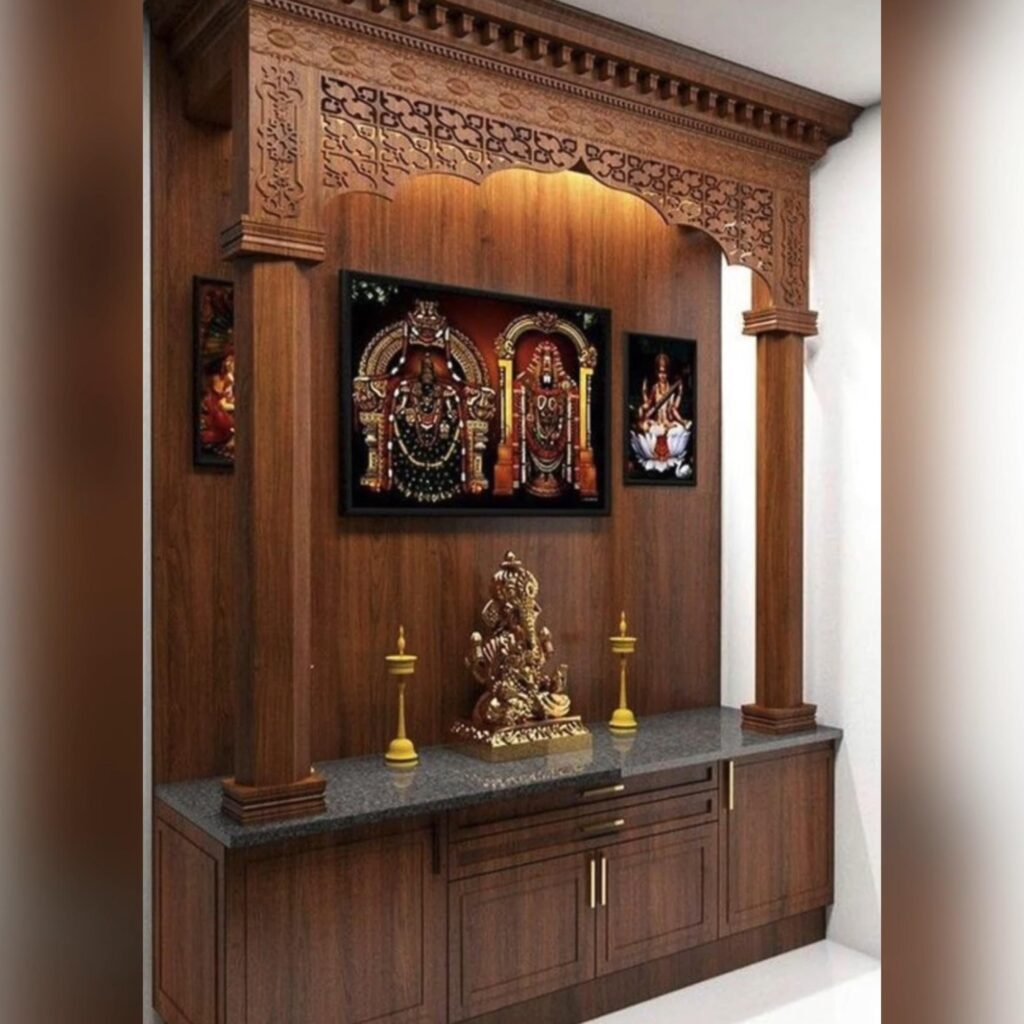
Plywood wooden mandirs are a delightful fusion of traditional craftsmanship and contemporary aesthetics. Their low maintenance requirements and resistance to environmental factors make them a practical choice for homeowners. With various finishes and designs available, these mandirs can be tailored to suit individual preferences, ensuring a harmonious integration into any living space.

Design Considerations for Plywood Wooden Mandirs
Also Read :
- Front Elevation Tiles Designs for Home – Dream House Listing
- Main Door Design for Home in Teak Wood – 2024
Size and Placement
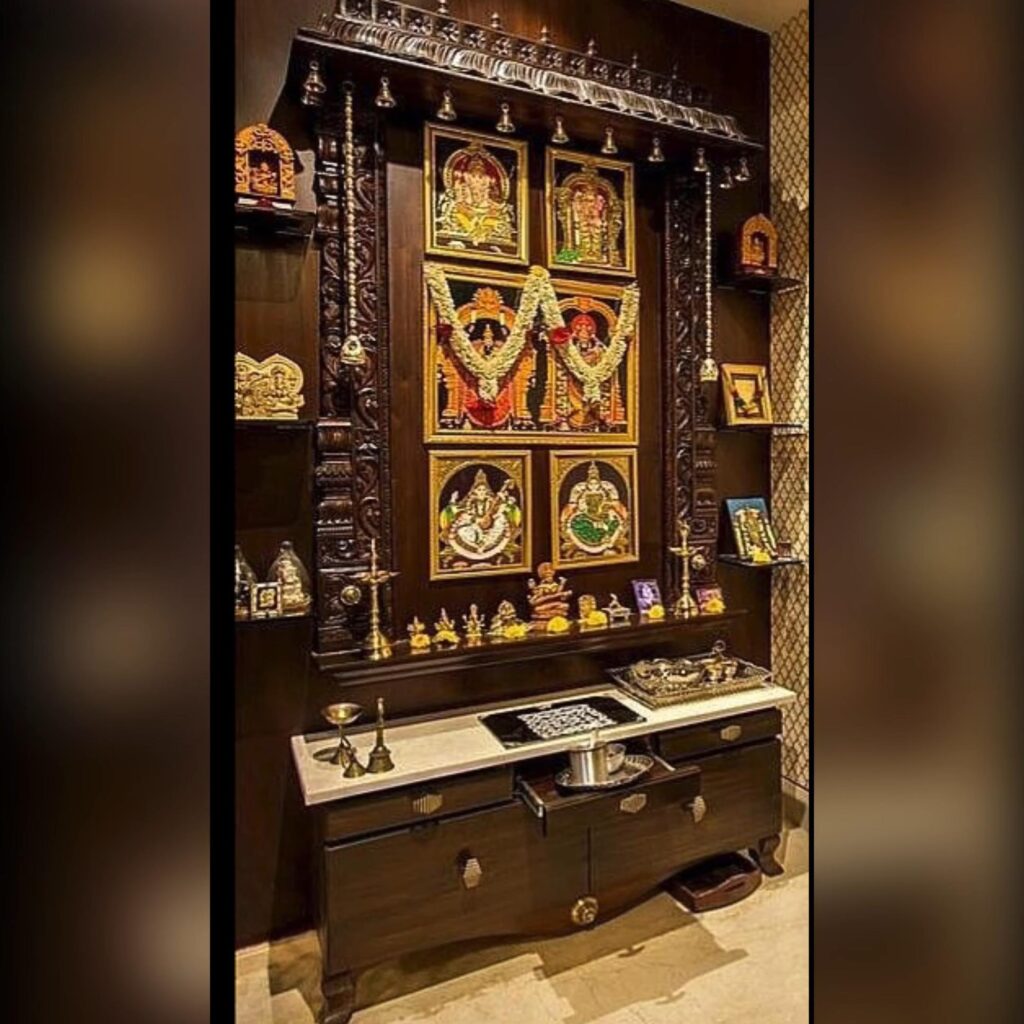
Determining the appropriate size and placement of a plywood wooden mandir is crucial for creating a balanced and harmonious environment. The available space within the home should be carefully assessed to ensure the mandir fits comfortably without compromising the functionality of the surrounding areas.
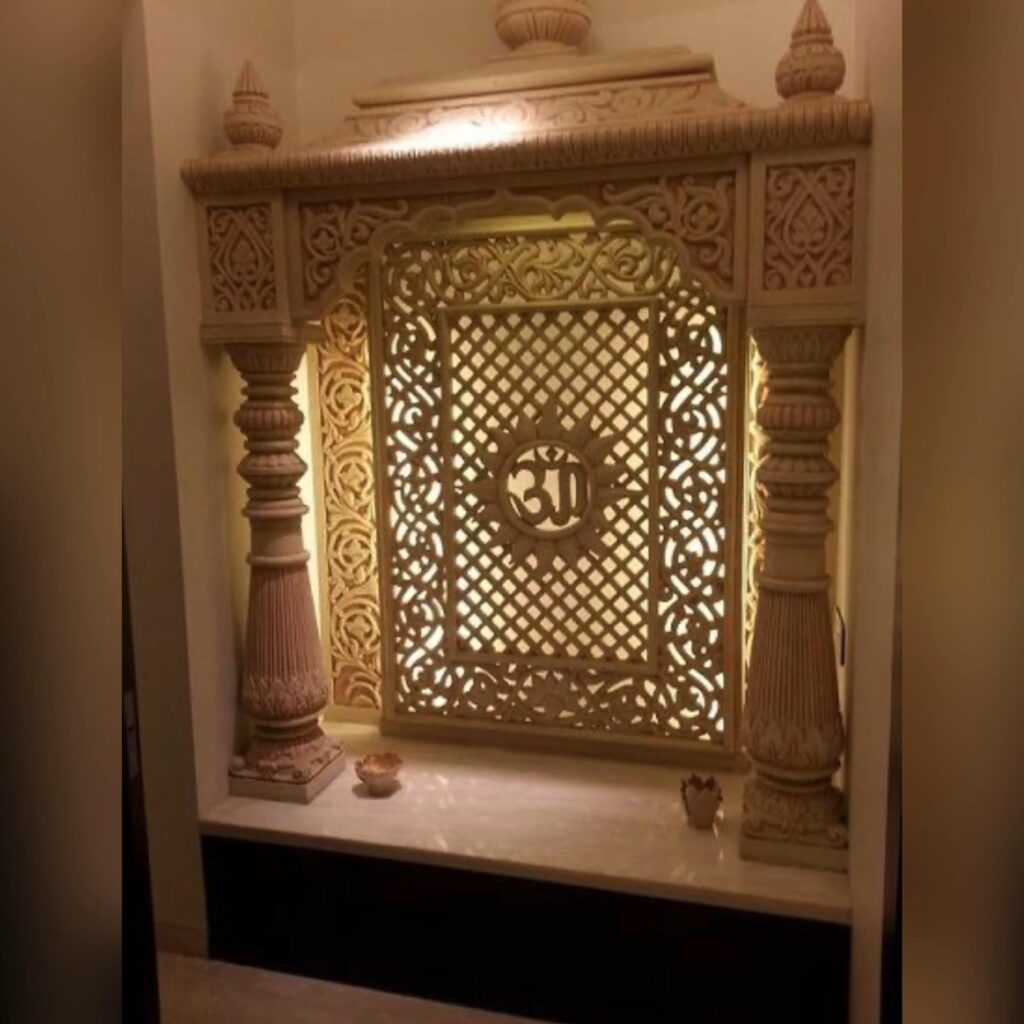
The ideal location for the mandir should be chosen with consideration for factors such as direction, natural lighting, and overall energy flow. Many Hindu traditions recommend placing the mandir in the northeast or east direction, as these are believed to foster positive energy and spiritual growth.
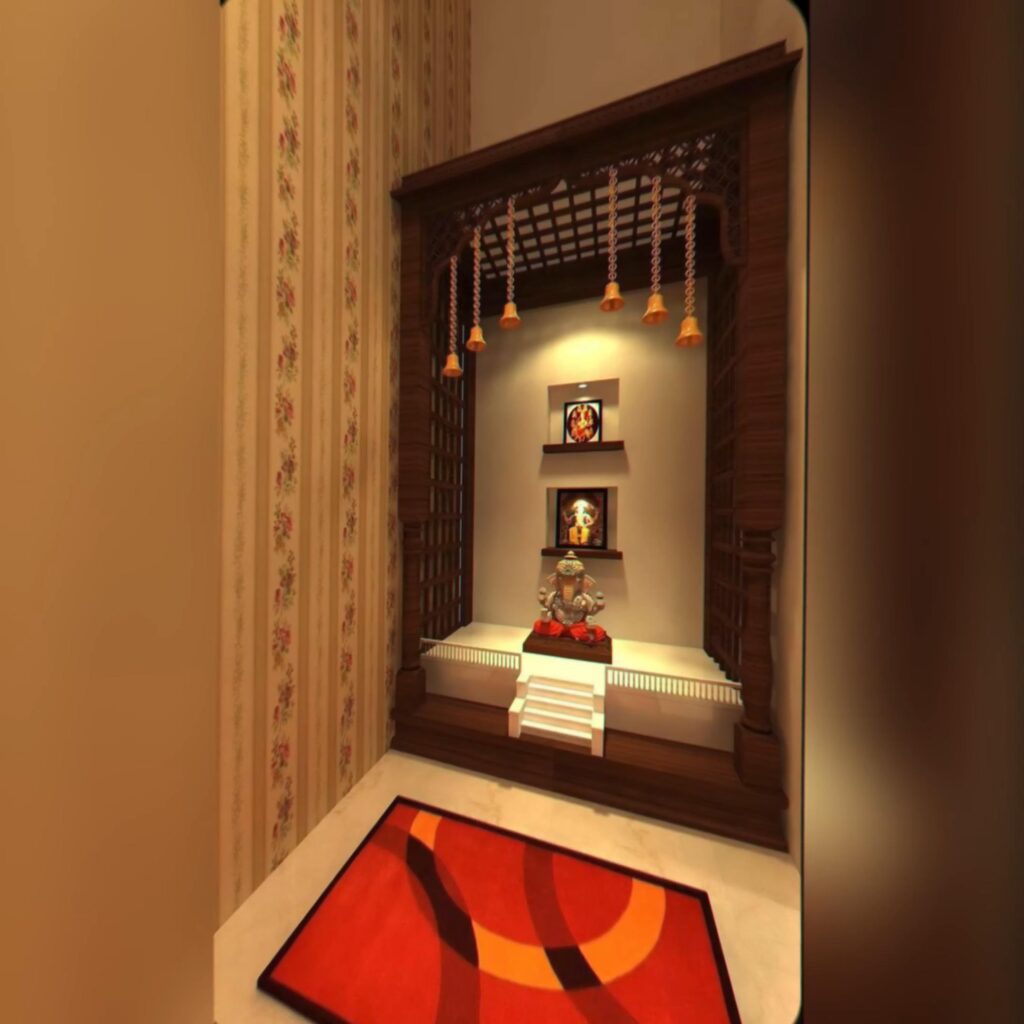
Proper lighting is also essential, as it enhances the ambiance and reverence of the sacred space. Natural light or well-designed artificial lighting can create a serene and inviting atmosphere, further enhancing the spiritual experience.
Styles and Themes
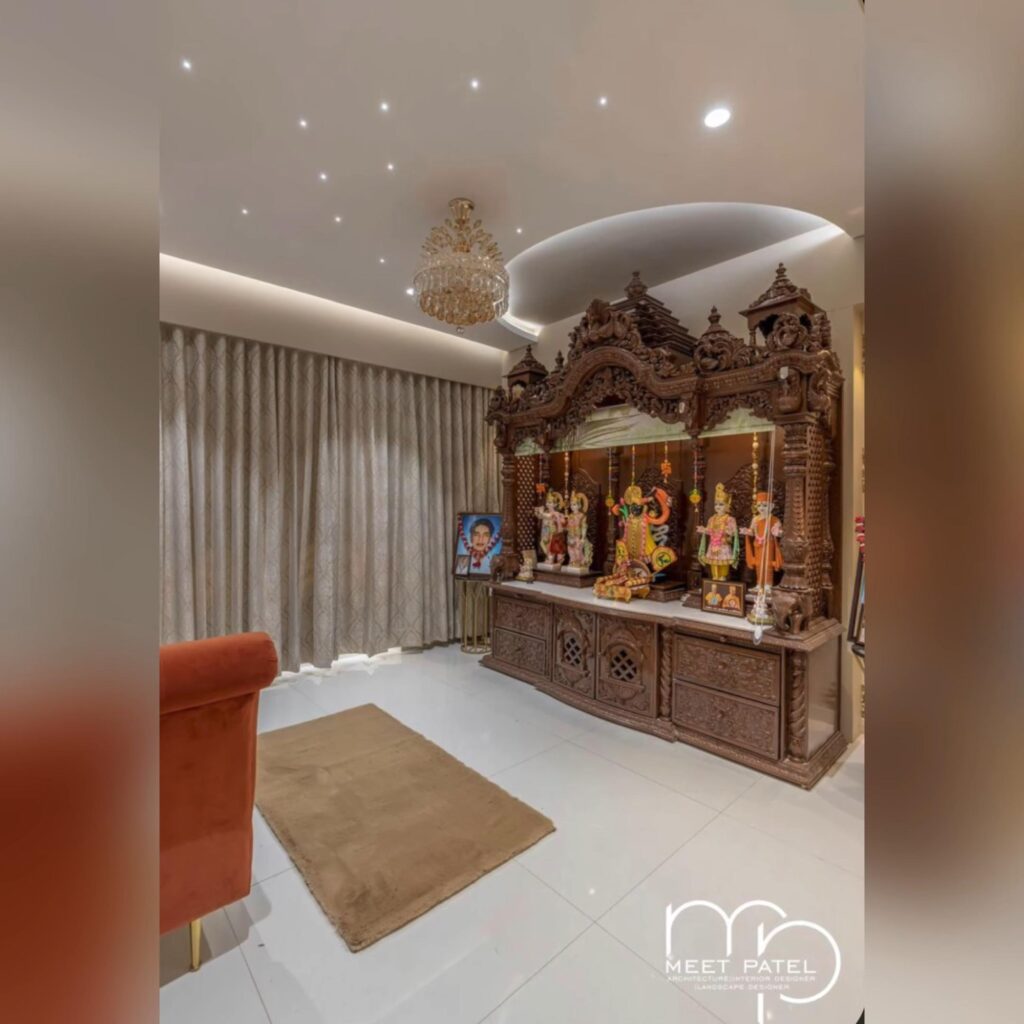
Plywood wooden mandirs offer a canvas for creative expression, allowing homeowners to choose between traditional and contemporary styles. Traditional designs often incorporate intricate carvings, cultural motifs, and architectural elements inspired by ancient Hindu temples, evoking a sense of timeless elegance and rich heritage.

Alternatively, contemporary styles embrace minimalism and clean lines, blending seamlessly with modern interior design trends. These designs often feature sleek, geometric shapes and subtle ornamentation, creating a sense of understated sophistication.
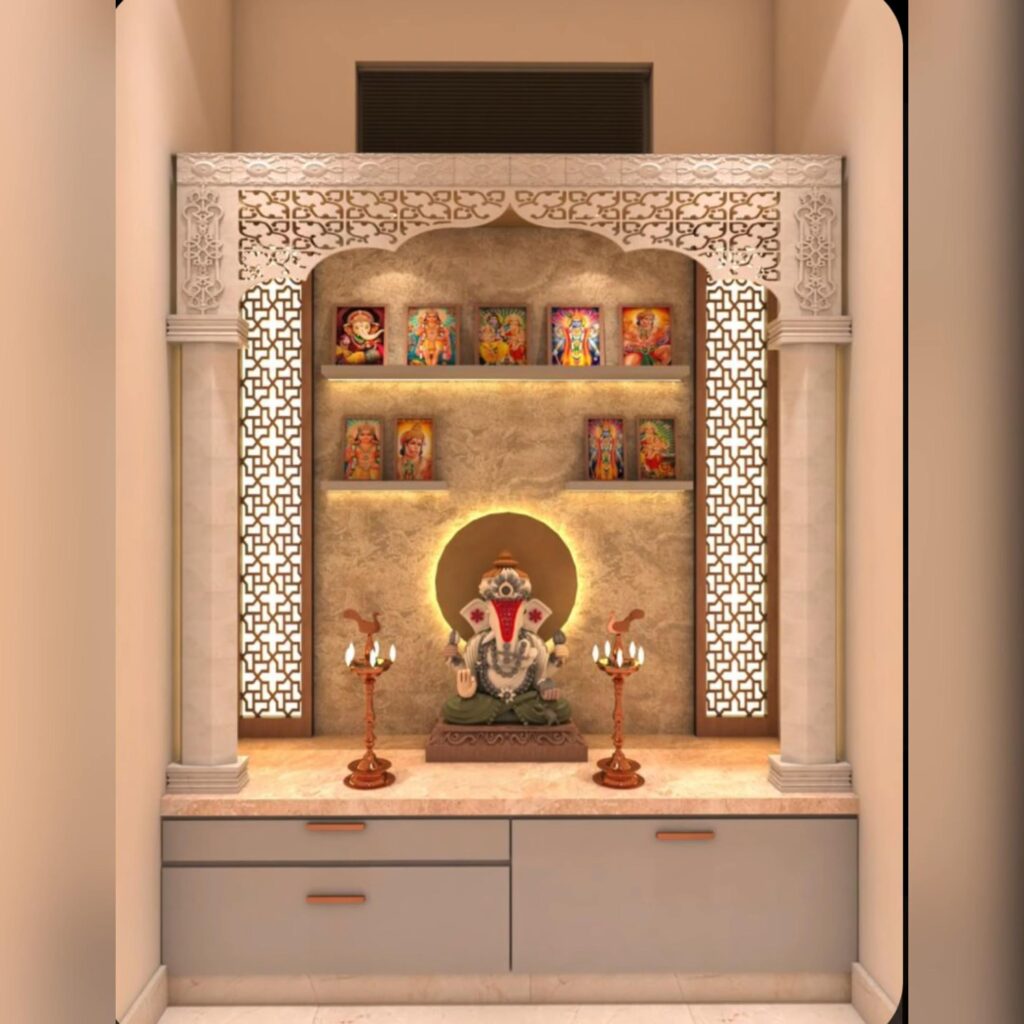
Customizing the mandir design to reflect personal preferences is also possible. Incorporating family heirlooms, cherished artifacts, or personalized engravings can add a unique touch, making the mandir a reflection of one’s spiritual journey and cultural identity.
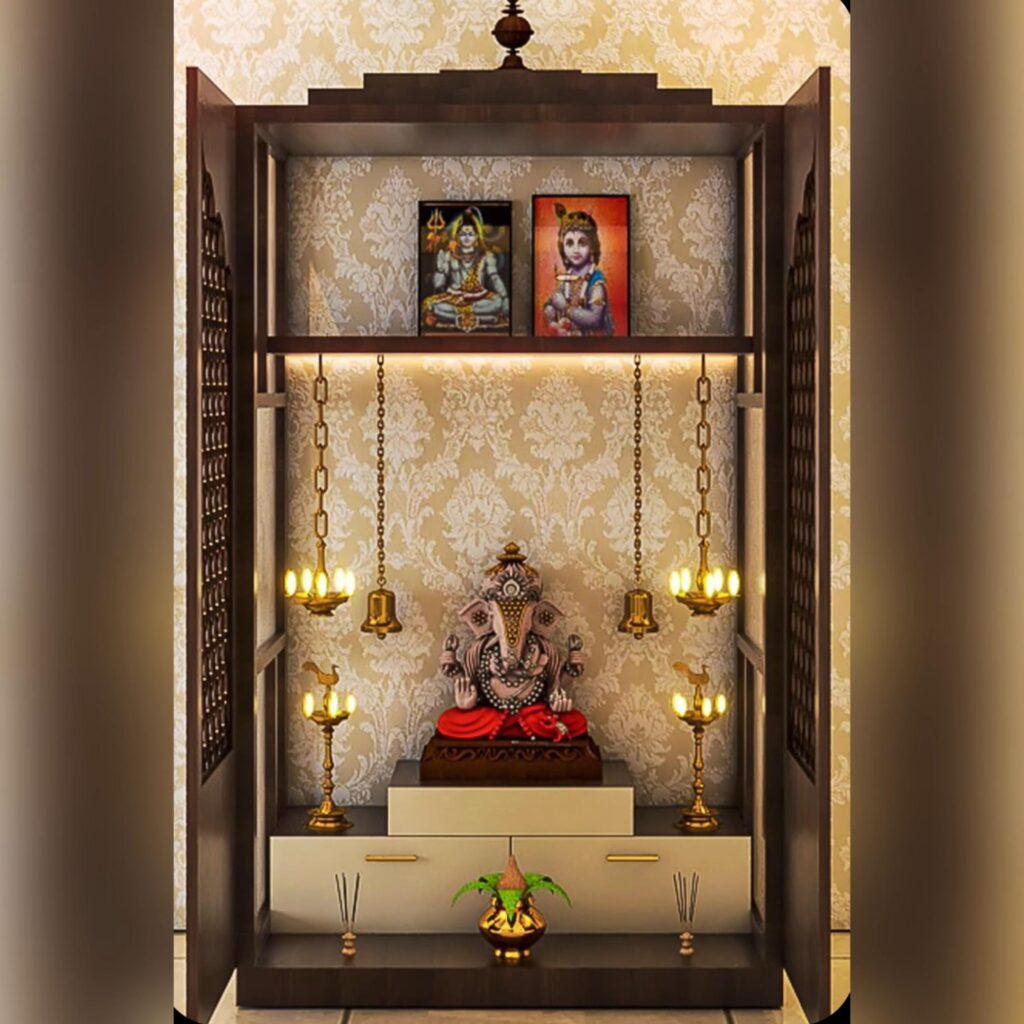
Materials and Construction
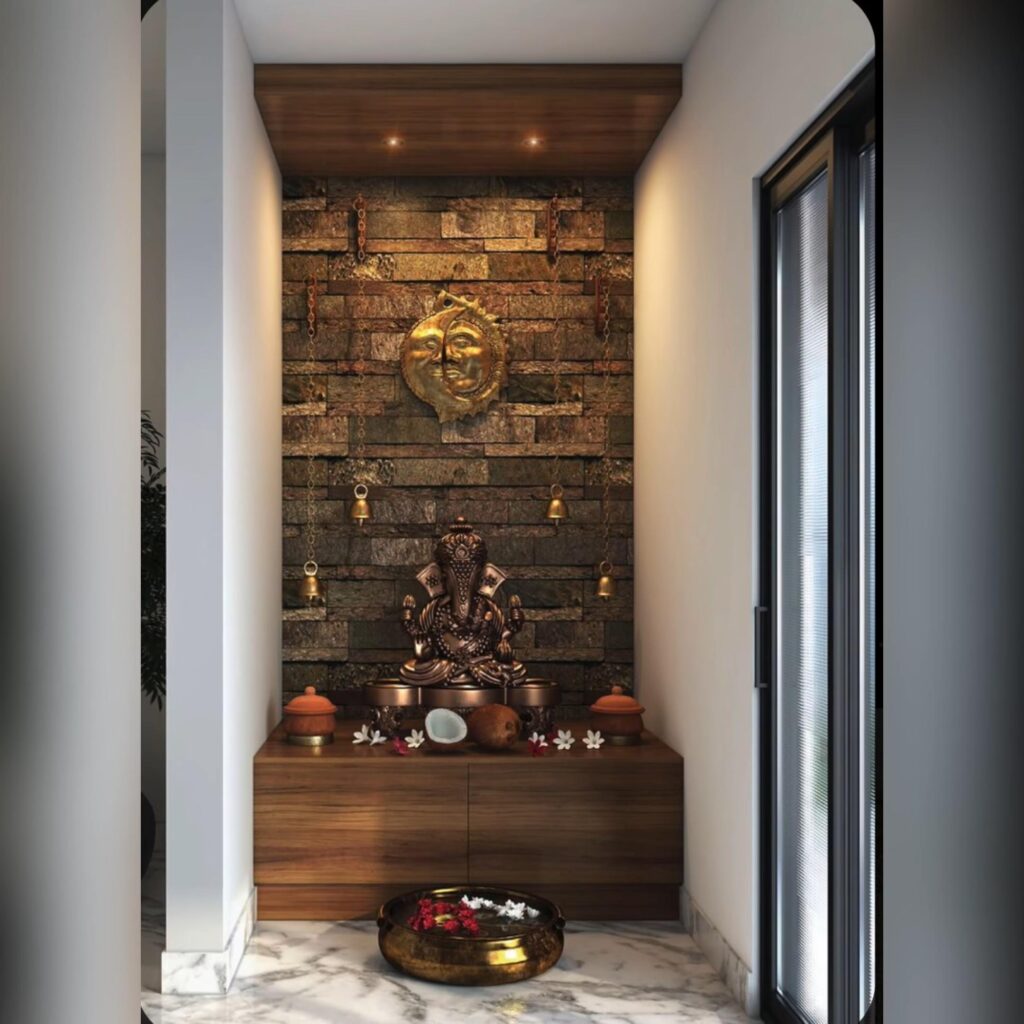
While plywood is the primary material used in the construction of these mandirs, several types of plywood are suitable for the task. High-quality hardwood plywood, such as teak or mahogany, offers superior strength, durability, and a luxurious appearance.
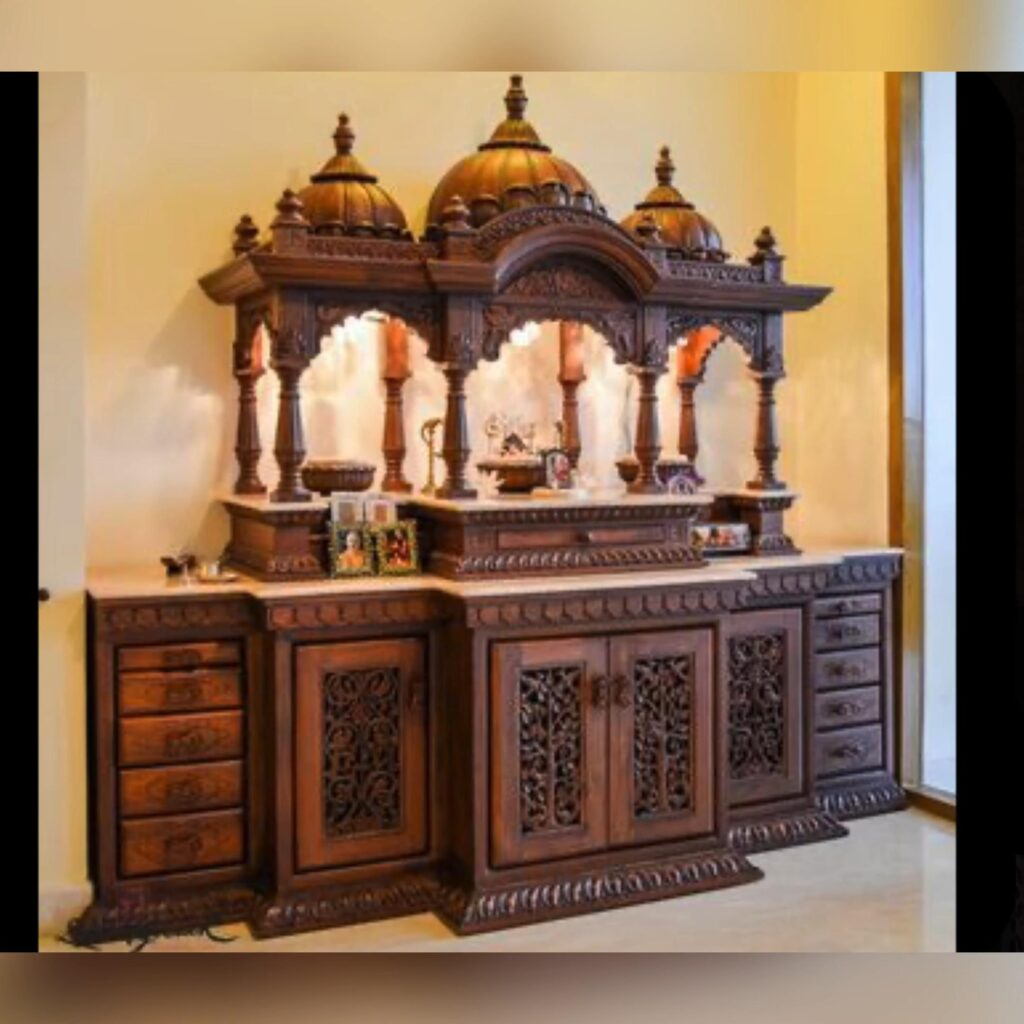
The assembly and finishing of the mandir require skilled craftsmanship. Techniques such as precise joinery, sanding, and staining ensure a flawless final product. Additional elements like doors, shelves, or niches can be incorporated to enhance functionality and accommodate various religious artifacts or idols.
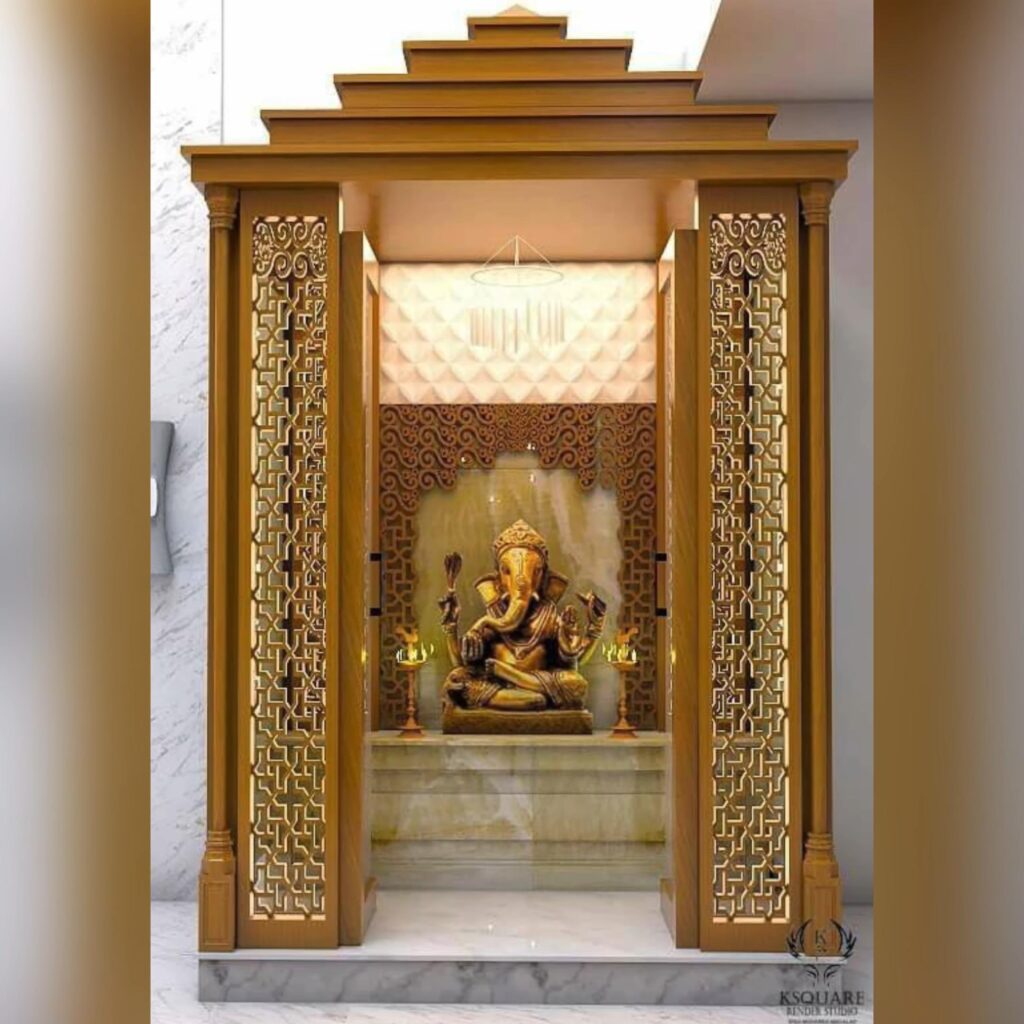
Attention to detail and quality construction is paramount to ensure the longevity and structural integrity of the plywood wooden mandir, as it serves as a cherished centerpiece for spiritual practices.
Enhancing the Plywood Wooden Mandir Experience
Also Read:
- Steel Gate Design for Indian Homes – 2024
- Light Pink Color Combination For Walls 2024 – DreamHouseListing
- 2-Door Sliding Wardrobe Designs: Maximizing Space and Style
Decorative Elements

To elevate the visual appeal and spiritual ambiance of a plywood wooden mandir, homeowners can incorporate a range of decorative elements. Brass or metal embellishments, such as intricate carvings or figurines, can add a touch of opulence and cultural authenticity.
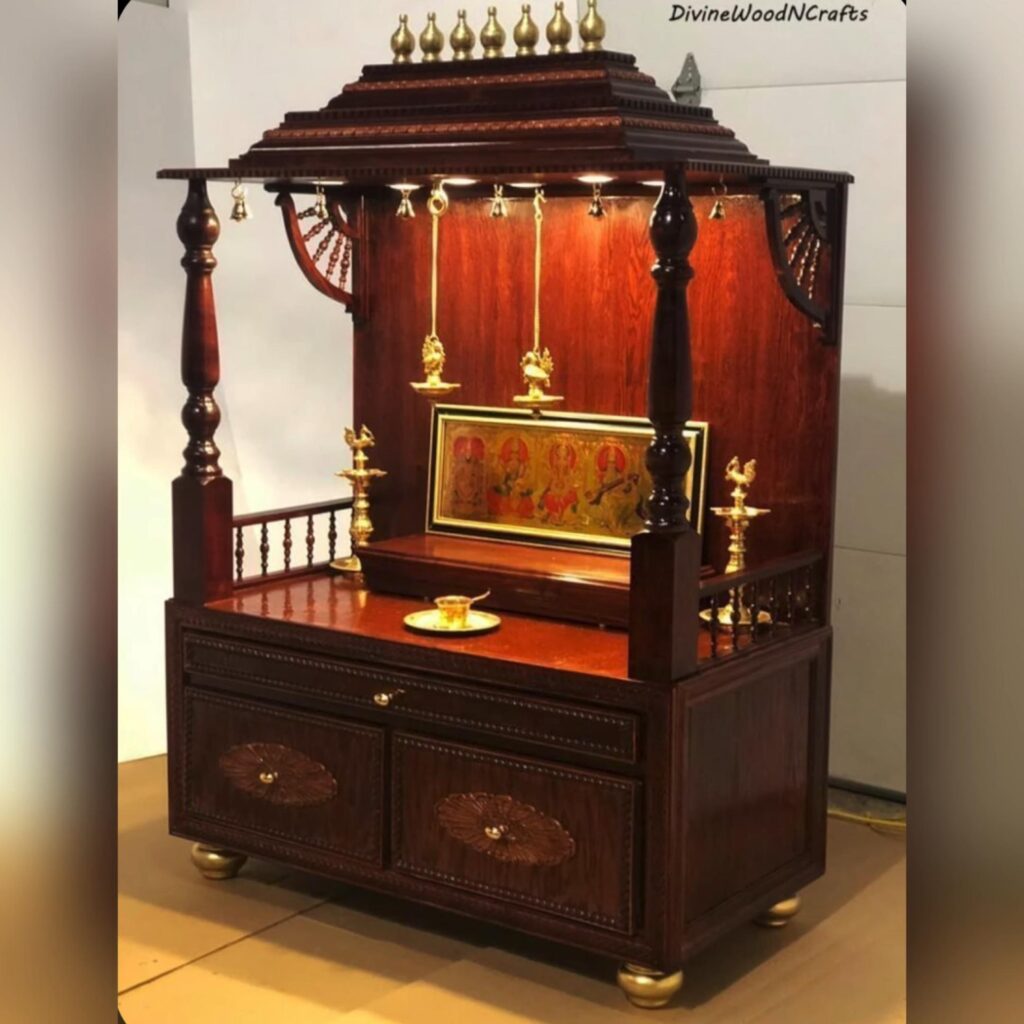
Decorative elements like rangoli (colorful patterns made from rice flour or flower petals) and diyas (traditional oil lamps) can further enhance the sacred atmosphere. These elements not only contribute to the aesthetic appeal but also hold deep symbolic meaning in Hindu traditions.
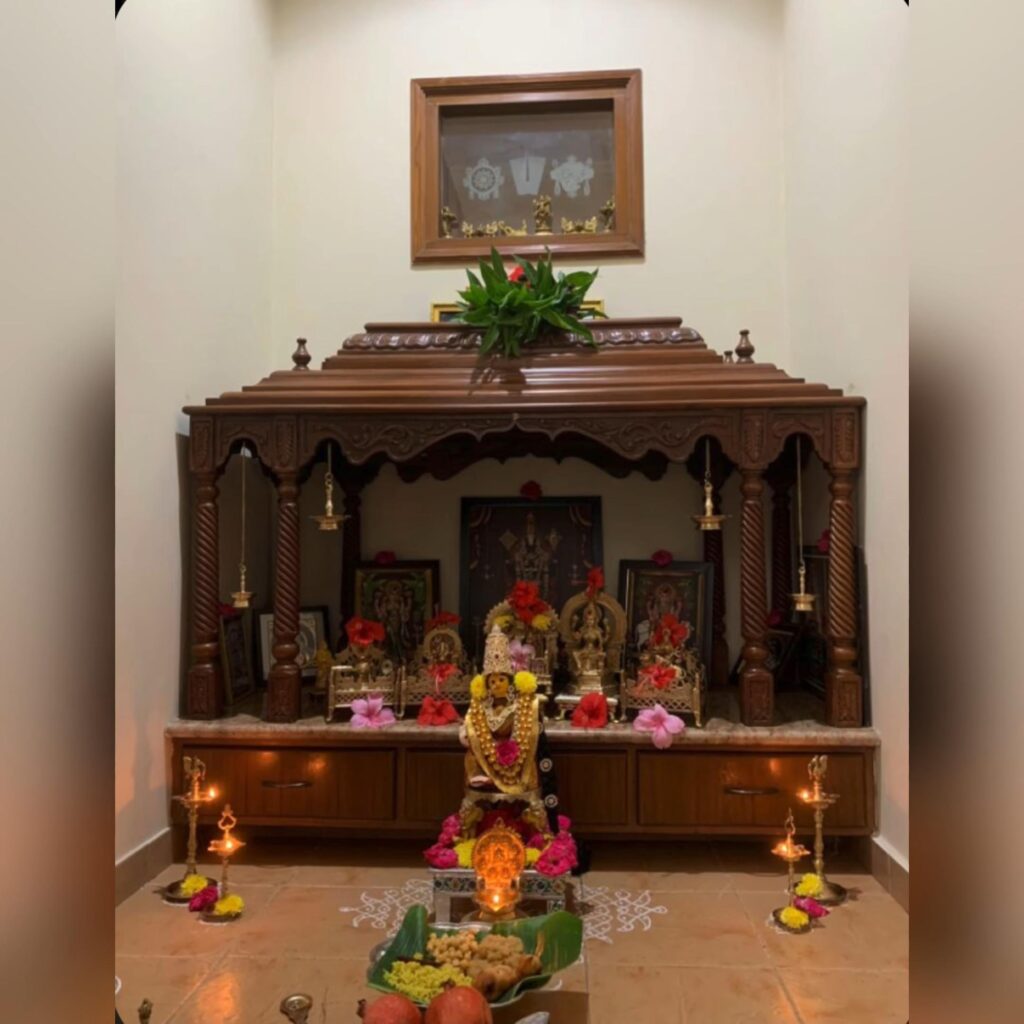
Choosing appropriate idols or deities to enshrine within the mandir is another crucial aspect. These sacred figures serve as focal points for worship and devotion, imbuing the space with spiritual energy and reverence.
Lighting and Ambiance
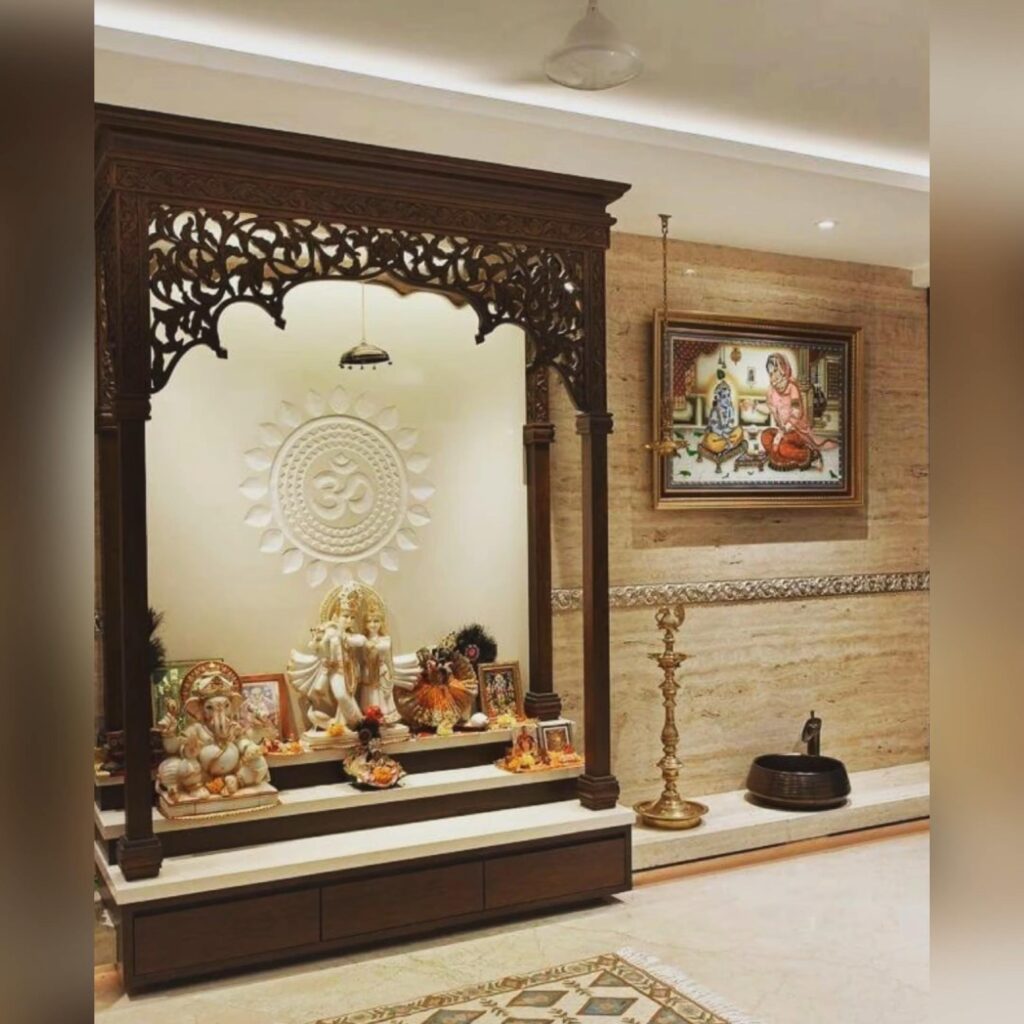
Proper lighting plays a pivotal role in creating a serene and peaceful ambiance within the plywood wooden mandir. Strategically placed lamps or candles can cast a warm, calming glow, evoking a sense of tranquility and reverence.
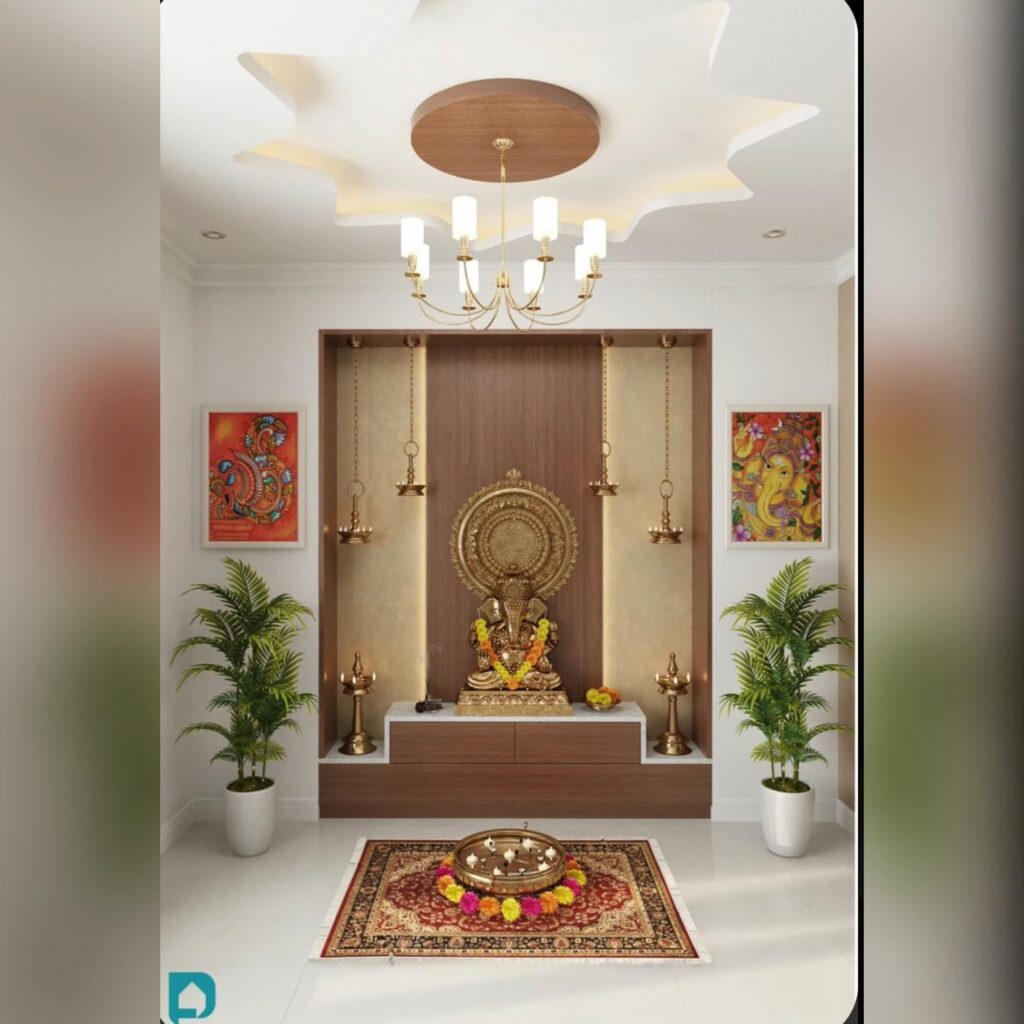
Additionally, incorporating natural elements like plants or water features can further enhance the spiritual experience. The gentle sounds of trickling water or the fresh scent of greenery can promote relaxation and mindfulness, fostering a deeper connection with nature and the divine.
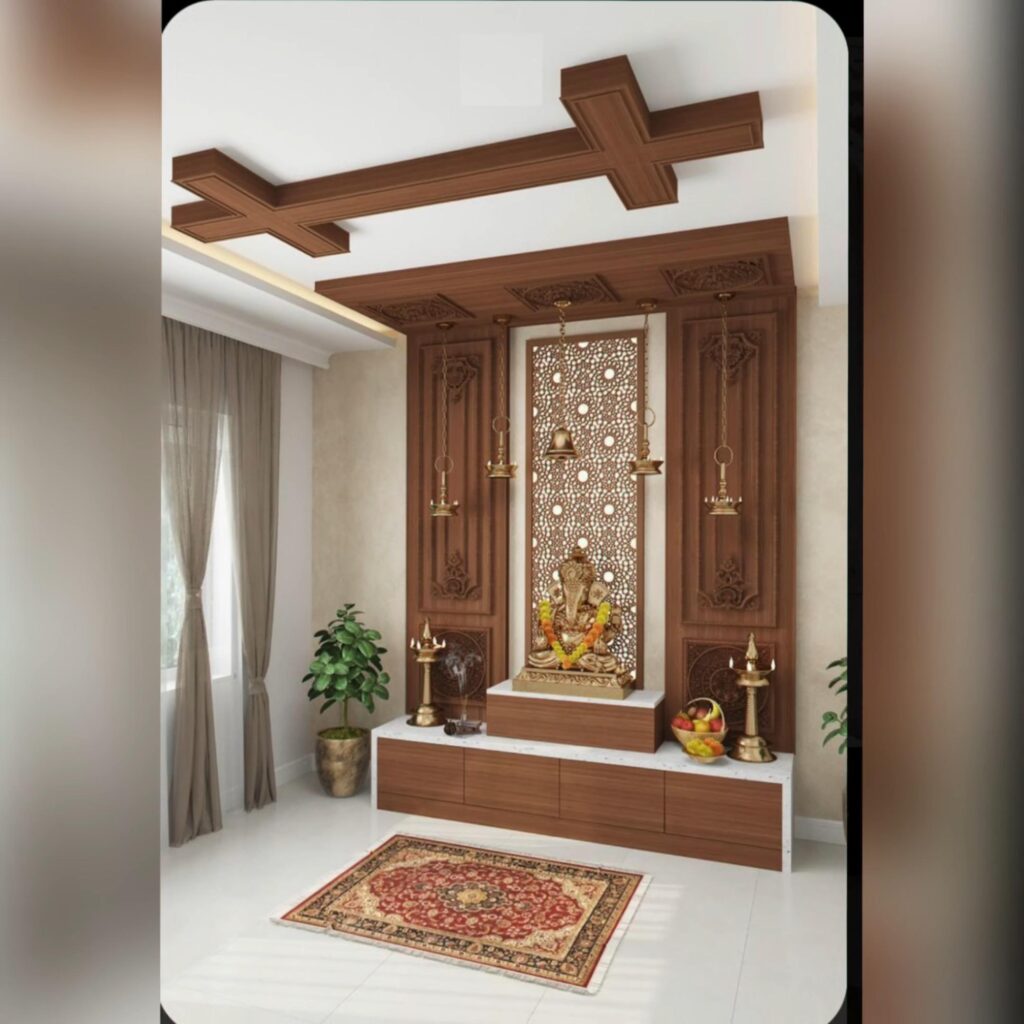
By carefully curating the lighting and ambiance, homeowners can transform their plywood wooden mandir into a truly immersive and rejuvenating sanctuary, conducive to spiritual growth and inner peace.
Other Designs
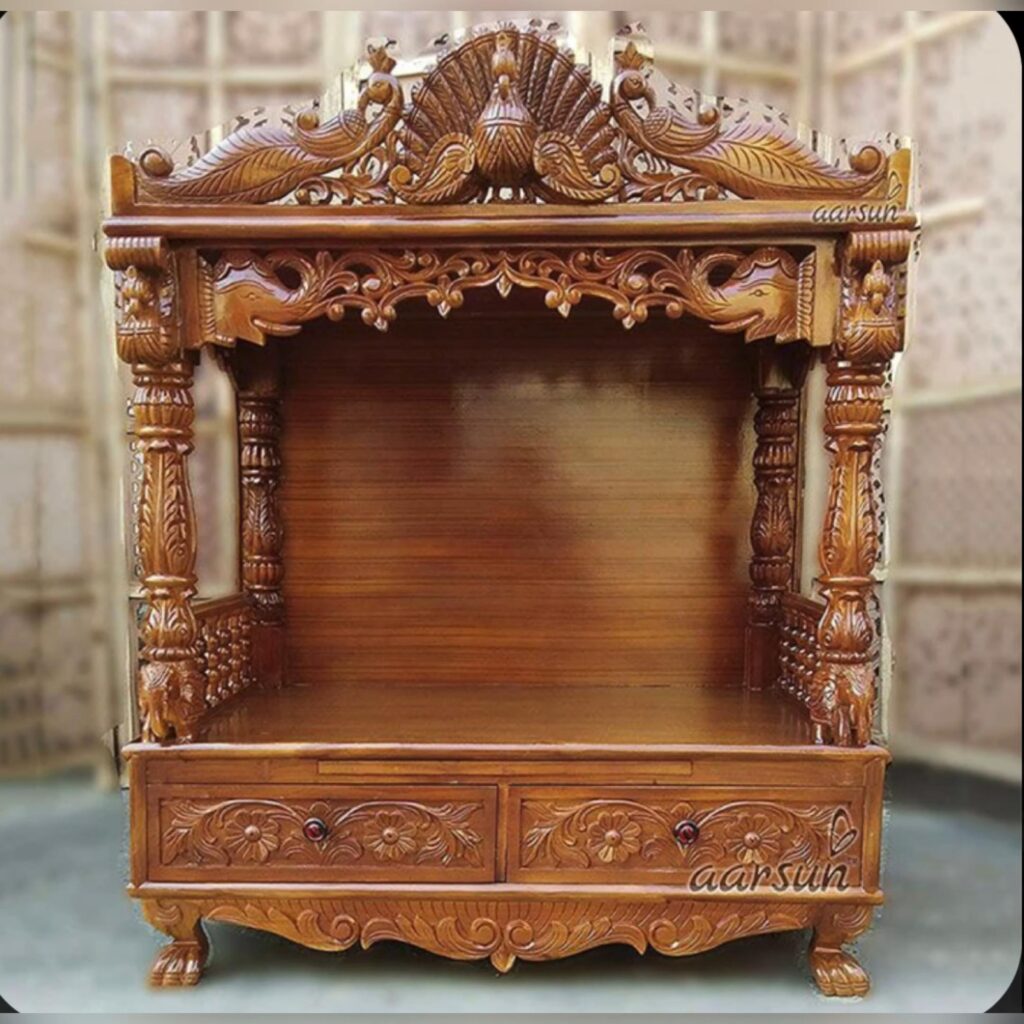
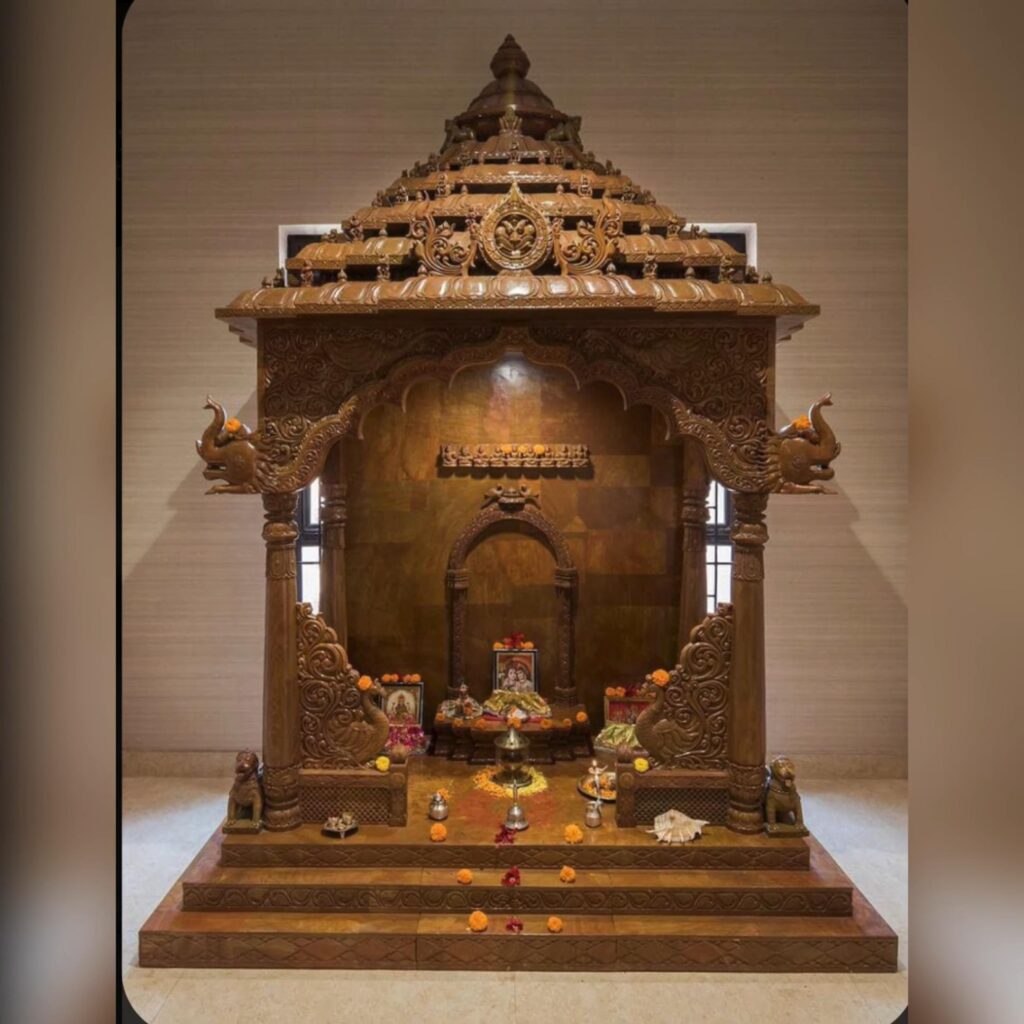
Maintenance and Care
To ensure the longevity and pristine condition of a plywood wooden mandir, proper maintenance and care are essential. Regular cleaning and dusting with soft cloths or gentle brushes can help remove accumulated dirt and prevent the buildup of grime.
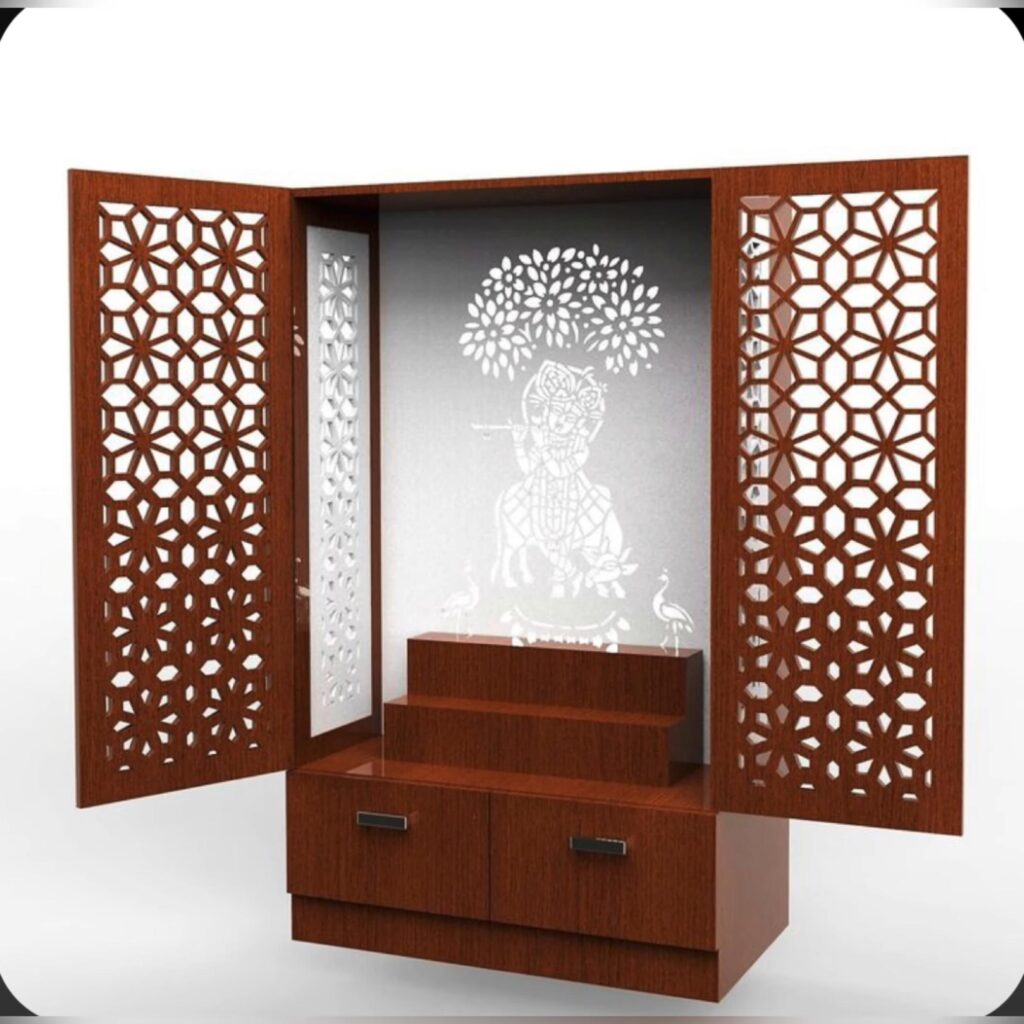
Protecting the mandir from moisture and humidity is crucial, as excessive exposure can lead to warping, cracking, or discoloration of the wood. Using dehumidifiers or air conditioning in humid environments can help mitigate these issues.
Periodic repairs and touch-ups may be necessary to address any minor damages or wear and tear. Sanding and refinishing affected areas can restore the mandir’s original luster and maintain its visual appeal.
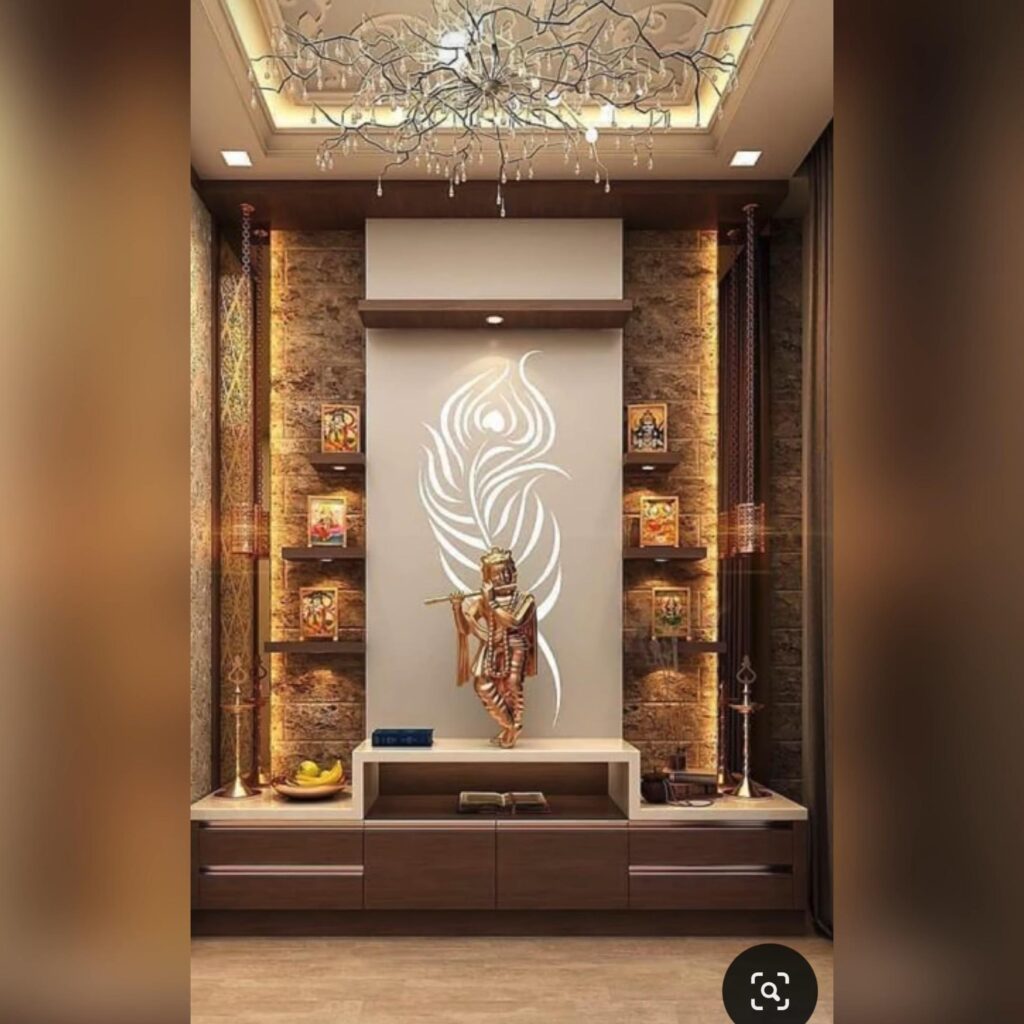
By adhering to proper maintenance and care practices, homeowners can preserve the beauty and integrity of their plywood wooden mandir, ensuring it remains a cherished and functional space for spiritual practices for years to come.
You Can Buy plywood wooden mandir for your home From These Links (NON-AFFILIATED)

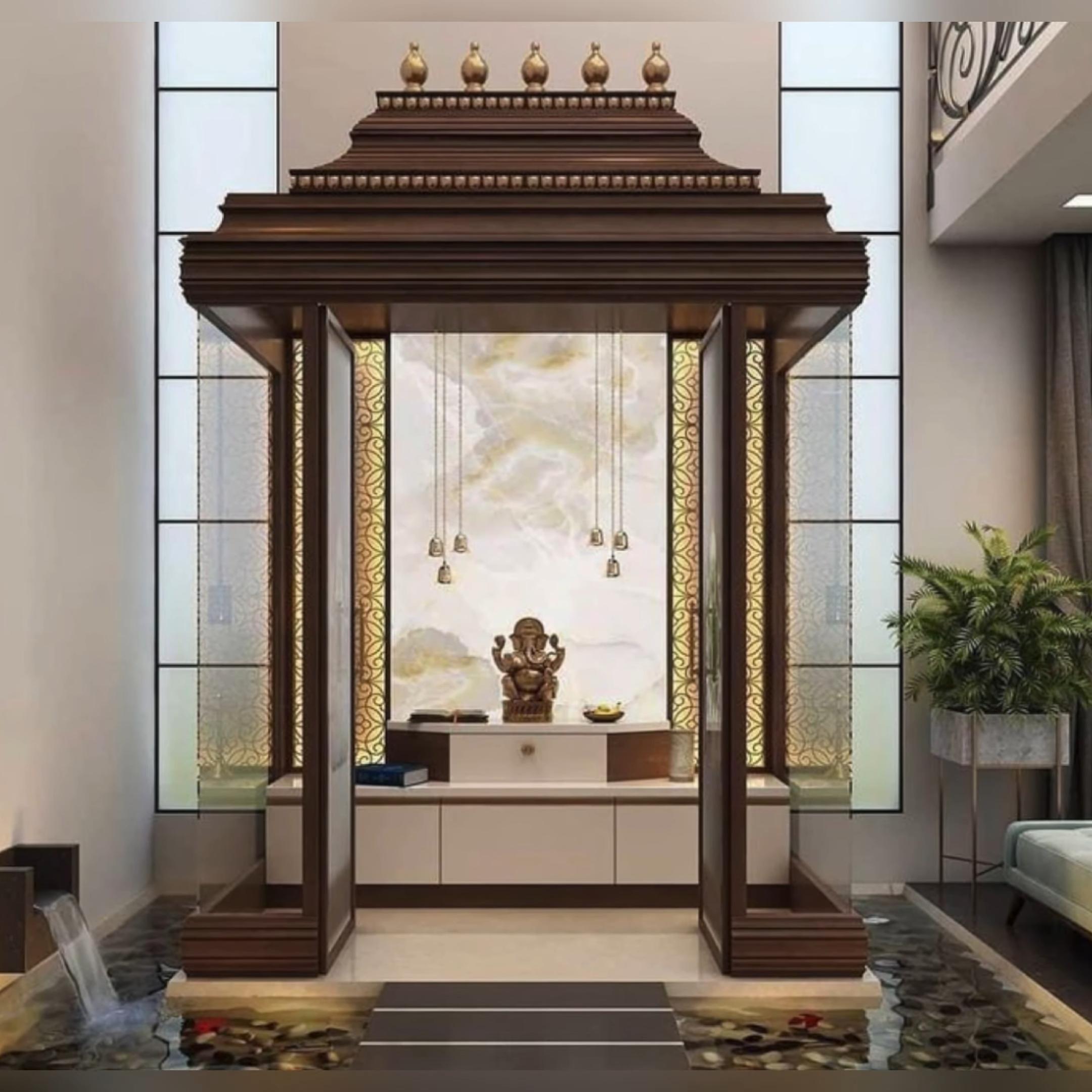


Pingback: Exploring the Latest Trends in Wardrobe Sunmica Design Catalogue - Dream House Listing
Pingback: New and Unique Buddha Statue For Home 2024 - Dream House Listing